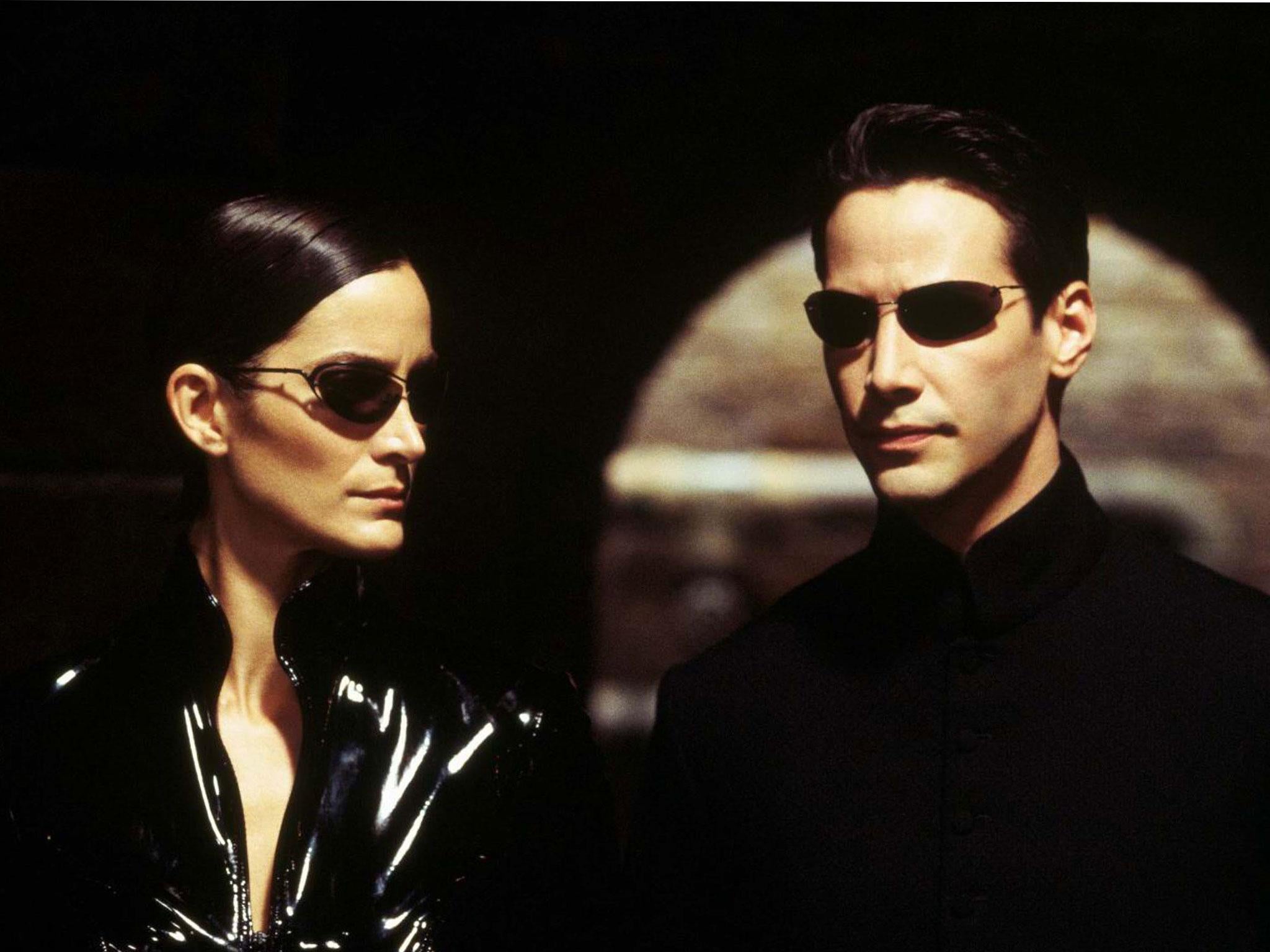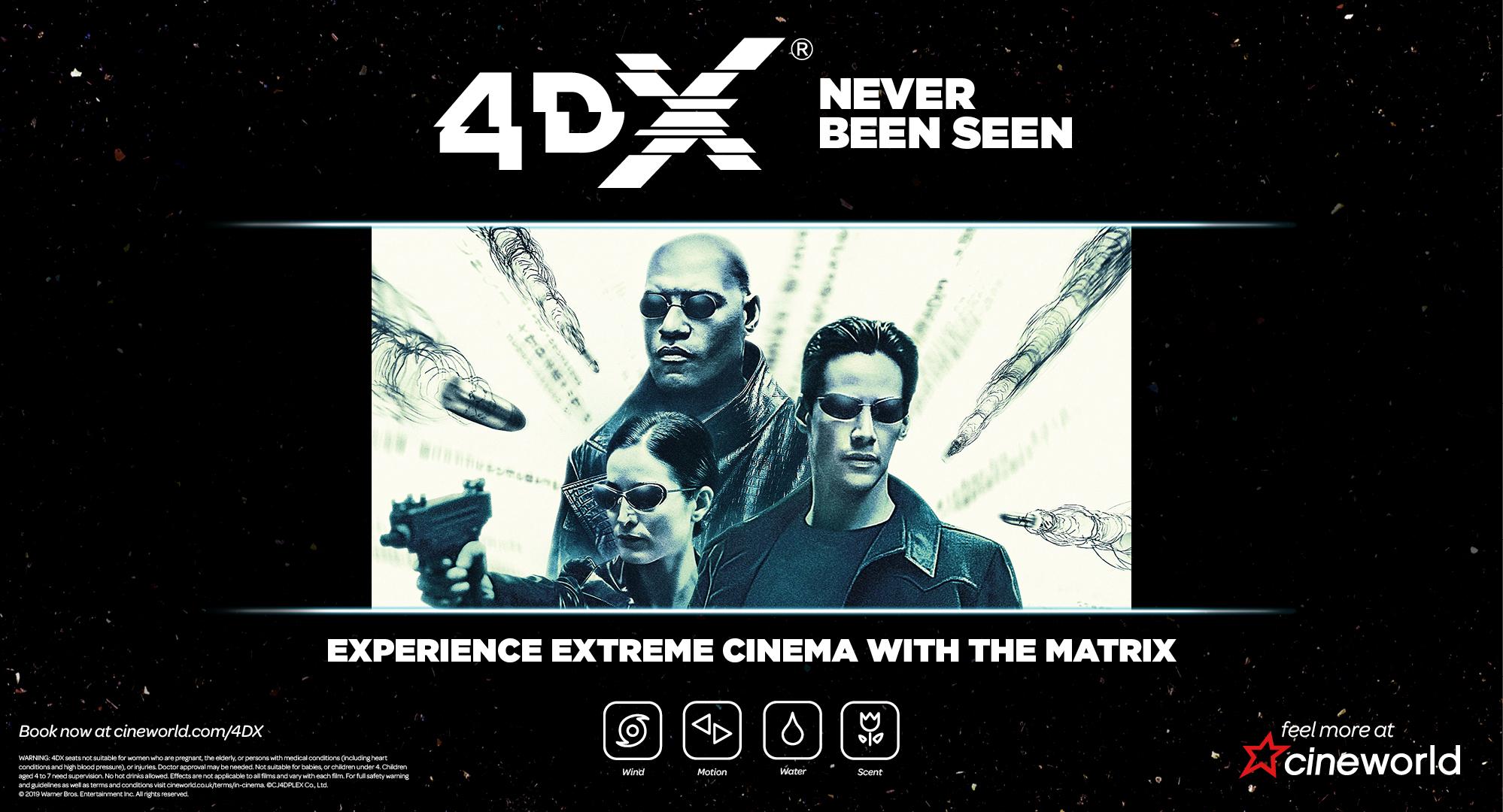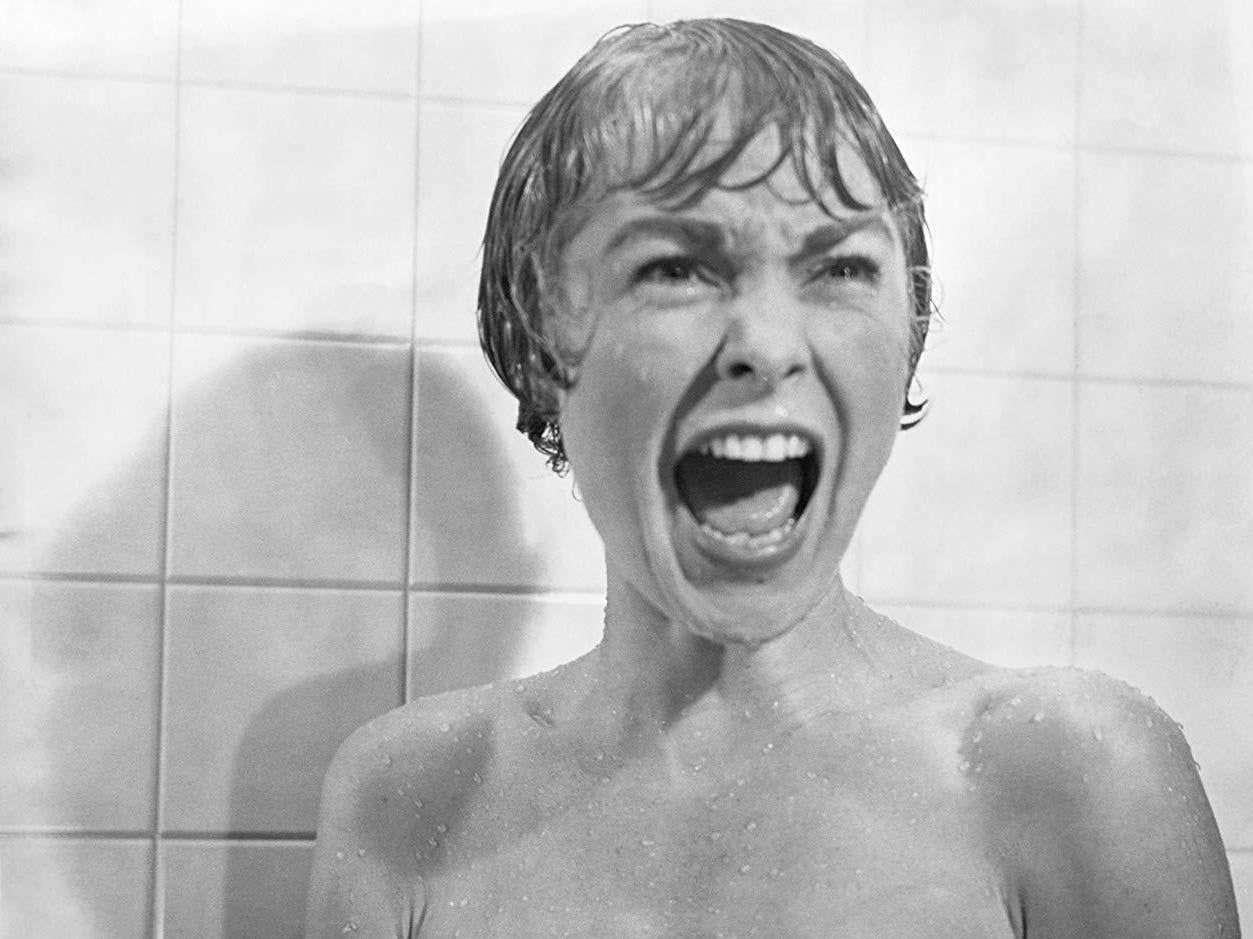The novelty of 4DX movies risks reducing film-going to the level of a glorified theme park ride
Inside Film: ‘The Matrix’ is about altered states, artificial intelligence and disappearing down the ‘rabbit hole’ – but when marking the film’s 20th anniversary you don’t necessarily want to be distracted by the 4DX effects of random rumbles, jolts and blasts of air

It was hard not to feel a little seasick during a 4DX screening of The Matrix (1999), re-released this week to mark the film’s 20th anniversary. “Don’t buy any open-top drinks,” audience members were warned in advance by the publicist. The seats, they were told, were going to be rocking and vibrating, so any beer or coke was bound to spill – unless the lids were fastened very tightly.
As soon as the credits rolled, the special effects began in earnest. Whenever there was a gunshot on screen, you felt a little whoosh of cool air above your ear. When rain fell on Keanu Reeves and Carrie-Anne Moss, damp drops landed on your arms. Then you began to fear the worst about the state of the plumbing in the basement cinema (which was, after all, very old). During the kung fu sequences, when Keanu’s Neo was working out with Laurence Fishburne’s Morphius or facing off against the lethal Agent Smith, it was hard to avoid the suspicion that a hyperactive kid was in the row behind you, kicking you persistently in the back. If there was lightning, it was accompanied by sudden strobe flashing on the cinema walls. When a helicopter crashed, you could have been forgiven for thinking that Leicester Square had suddenly found itself at the middle of the San Andreas fault line.
One effect that didn’t work at all was the scent. But so many spectators were eating hot dogs that the smell of fried onions, sausage meat and ketchup kept everything else at bay. 4DX has been around for several years now but is still being marketed as a revolutionary new experience, “3D on steroids” and the “ultimate state-of-the-art technology”, as it has been called. In fact, it’s a modern-day version of fairground gimmickry that is as old as cinema itself.

You can’t help but admire the chutzpah of exhibitors who are successfully persuading punters to pay a hefty premium on their tickets to be rained on and to have their seats judder beneath them. It is debatable, though, whether it actually enhances an audience’s enjoyment. When you are drawn into the story, wondering if Morpheus will be saved or if Neo will make it out of the Matrix alive, you don’t necessarily want to be distracted by random rumbles, jolts and blasts of air.
The Matrix is about altered states, artificial intelligence and disappearing down the “rabbit hole”– but that doesn’t mean it benefits from the 4DX treatment. Instead of concentrating on the screen, spectators at the preview screening were continually looking around at the flashing lights and the seats that took on a life of their own.
The 4DX effect of the use of strong scents was something tested out by John Waters in his notorious, miasmatic 1981 comedy melodrama, Polyester. Waters provided cinemagoers with scratch and sniff cards. This allowed them to savour 10 aromas at key points during the film, among them “flatulence”, “natural gas” and “dirty shoes”. It also prompted a barrage of bad puns from British reviewers, who wrote about “paying through the nose” and suggested the film was not to be “sniffed at” even if (or because) its plot did “stink”.

Long before 4DX made seats judder, cinema hucksters and mountebanks were using similar tricks to heighten the cinema-going experience. William Castle, director of Fifties horror movie The Tingler (1959), starring Vincent Price, came up with the novel ruse of electrocuting selected spectators.
“I feel obligated to warn you that some of the sensations, some of the physical reactions which the actors on the screen will feel will also be experienced for the first time in motion picture history by certain members of this audience,” he warned spectators of the “strange, tingling expectation” that would be felt underneath selected seats. “You can obtain immediate relief by screaming,” he advised them of how best to react.
It was a brilliant gimmick to which Joe Dante paid tribute in his 1993 feature, Matinee, set in the early 1960s during the heightened anxiety and paranoia of the Cuban missile crisis. Dante’s film features a cinema showman (ebulliently played by John Goodman) introducing a new filmmaking process called “Rumble-Rama” and putting buzzers under cinema seats to ensure audiences are shocked by his new horror film, Mant! (a monster movie about a human and an ant who experience a huge blast of radiation at exactly the same time).
Another of Castle’s gambits was to take out insurance for thousands of dollars with Lloyd’s of London in case cinemagoers died of fright while watching Macabre (1958), one of his earlier horror pictures. (None did die but the investment was still worthwhile in terms of tickets sold.) Castle, who went on to produce Rosemary’s Baby (1968) once distributed “ghost viewers” to spectators – special specs that enabled them to see evil spirits on screen. He couldn’t afford the full panoply of effects that 4DX now provides, but he had realised that when it came to scaring the public, psychological shock tactics were just as effective.
Alfred Hitchcock had exactly the same insight when he was marketing Psycho (1960). He refused to allow late admission to screenings, proclaiming that no one, “not even the manager’s brother, the president of the United States or the Queen of England (God bless her)” would be allowed in once the film had started. He swore audiences to secrecy. “Don’t give away the ending. It’s the only one we have,” was one of his slogans. The public enjoyed being complicit in his little game. The film did bumper business and most of the people who saw it didn’t tell their friends about the true nature of that nice-seeming Norman Bates.
The Matrix isn’t some William Castle-style B-movie, Hitchcock shocker or John Waters-like exercise in bad taste but a big blockbuster from the late 1990s. It spawned a franchise, launched its directors, the Wachowskis, as major figures in Hollywood and is now regarded as something of a classic. The thinking behind the cinema re-release is presumably that audiences wouldn’t pay to see a film easily accessible online and on BluRay without the novelty of 4DX to attract them.
In an era of Netflix and Amazon, cinemas are trying to offer their customers scale and splendour they can’t match watching box sets at home. Venues are growing ever more lavish. The refurbished Odeon Leicester Square has luxurious reclining seats, presumably on the off-chance you might want a nap halfway through a film. Screens are getting bigger and the sound is getting sharper.
At times, the emphasis is so firmly on the cinema-going “experience” that the exhibitors risk forgetting the films themselves. 4DX (first developed in South Korea a decade ago) risks reducing film-going to the level of a glorified theme park ride. It also feels strangely old fashioned. In a hi-tech, digital world, having your seat shaken or tiny raindrops landing on you hardly seems like the summit of ingenuity. At its worst, it distracts from the films rather than enhancing them. The directors behind these movies have had no say in how the effects in the auditorium are used.
“You ever have that feeling where you’re not sure if you’re awake or still dreaming?” Keanu Reeves’ bedraggled-looking Neo asks a friend early on in The Matrix. “All the time. It’s called mescaline, it’s the only way to fly,” the friend replies. It’s one of those eerie moments in the film when audiences disappear down the rabbit hole with the characters in the film. Sadly, the magic dissipates and they are liable to come out of their trance very quickly once the 4DX kicks in and their seats begin to rattle, roll and shake.
‘The Matrix’ is screening in 4DX at Cineworld on 25 July
Join our commenting forum
Join thought-provoking conversations, follow other Independent readers and see their replies
Comments